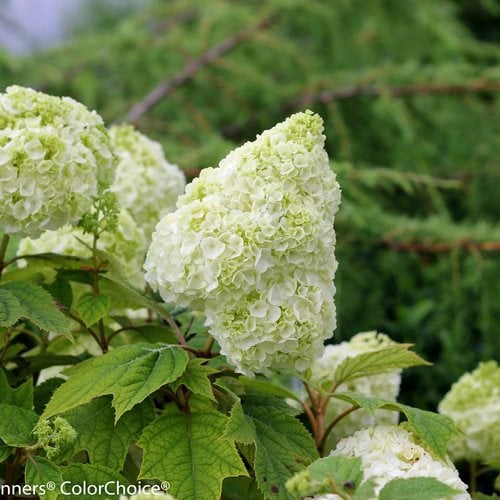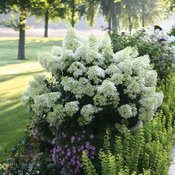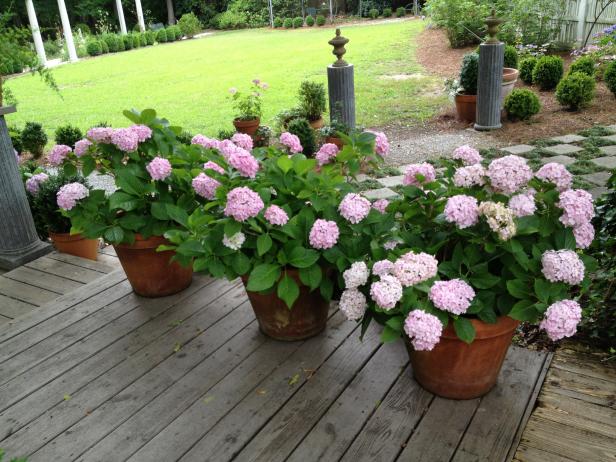Hydrangeas For Shade: The Ultimate Guide
Hydrangeas for Shade: The Ultimate Guide
Hydrangeas are beautiful flowering shrubs that can add a touch of elegance to any garden. But what if you don't have a lot of sun? Don't worry, there are still plenty of hydrangeas that will thrive in shade.
In this guide, we'll take a look at some of the best hydrangeas for shade, as well as provide tips on how to care for them.
Types of Hydrangeas for Shade
There are many different types of hydrangeas, but not all of them are created equal when it comes to shade tolerance. Some of the best hydrangeas for shade include:
- Oakleaf hydrangeas (Hydrangea quercifolia) are known for their large, lobed leaves and clusters of white or pink flowers. They can tolerate full shade in the north, but prefer partial shade in warmer climates.

- Smooth hydrangeas (Hydrangea arborescens) are also known for their large leaves, but their flowers are typically white or cream-colored. They are more tolerant of full sun than oakleaf hydrangeas, but prefer partial shade.

- Panicle hydrangeas (Hydrangea paniculata) are known for their tall, upright growth and large, cone-shaped flowers. They can tolerate full sun, but prefer partial shade.

- Climbing hydrangeas (Hydrangea petiolaris) are a unique type of hydrangea that can climb up to 50 feet on a sturdy support. They prefer partial shade and produce clusters of white flowers in summer.

Caring for Hydrangeas in Shade
If you're growing hydrangeas in shade, there are a few things you can do to help them thrive:
- Plant them in a location that receives dappled sunlight or partial shade.
- Be sure to water them regularly, especially during hot, dry weather.
- Mulch around the base of the plants to help retain moisture and suppress weeds.
- Feed them with a balanced fertilizer in spring and fall.
- Prune them in late winter or early spring, before new growth begins.
With proper care, hydrangeas can be beautiful and long-lived additions to any shady garden.
Conclusion
Hydrangeas are a versatile group of plants that can be grown in a variety of conditions. If you have a shady spot in your garden, there are still plenty of hydrangeas that will thrive there. With a little care and attention, you can enjoy these beautiful flowers for many years to come.
Hydrangeas are beautiful flowering shrubs that can be grown in a variety of conditions, including shade. However, not all hydrangeas are created equal when it comes to shade tolerance. Some varieties, such as the oakleaf hydrangea (Hydrangea quercifolia), are better suited for shady spots than others.
If you're looking for a hydrangea that will thrive in the shade, is a great resource. The website has a comprehensive list of hydrangea varieties that are known for their shade tolerance, as well as tips on how to care for these plants.
In addition to providing information about hydrangea shade, also offers a variety of other gardening resources, including articles, videos, and plant catalogs. So whether you're a beginner gardener or a seasoned pro, is a great place to learn more about hydrangeas and other plants.
FAQ of hydrangea shade
- What are the different types of hydrangea shade?
There are several types of hydrangeas that can tolerate shade, including:
- Oakleaf hydrangeas are the most shade-tolerant type of hydrangea. They can grow in full shade, but they will produce more flowers if they receive some morning sun.
- Panicle hydrangeas can also tolerate full shade, but they will flower best if they receive at least 4 hours of sunlight per day.
- Smooth hydrangeas are a good choice for partial shade. They will flower best if they receive 4-6 hours of sunlight per day.
- Hillside hydrangeas are a good choice for shady areas with well-draining soil. They can tolerate full shade, but they will produce more flowers if they receive some morning sun.
- Climbing hydrangeas can tolerate partial shade, but they will flower best if they receive at least 4 hours of sunlight per day.
- How much sun do hydrangeas need in shade?
The amount of sun hydrangeas need in shade will vary depending on the type of hydrangea. However, most hydrangeas will do best if they receive at least 4 hours of sunlight per day. If you live in an area with hot summers, you may want to choose a hydrangea that can tolerate full shade.
- What are the best hydrangeas for shady areas?
The best hydrangeas for shady areas are those that are tolerant of full shade, such as oakleaf hydrangeas, panicle hydrangeas, and hillside hydrangeas. These hydrangeas will still produce flowers in shady areas, but they may not be as large or colorful as hydrangeas that receive more sunlight.
- How do I care for hydrangeas in shade?
Hydrangeas in shade need regular watering, especially during hot, dry weather. They also need to be fertilized in the spring with a balanced fertilizer. In addition, you may need to prune your hydrangeas in the spring to remove dead or damaged branches.
- How do I change the color of my hydrangea flowers?
The color of hydrangea flowers can be affected by the pH of the soil. In acidic soil (pH 5.5 or lower), hydrangea flowers will be blue. In alkaline soil (pH 7.0 or higher), hydrangea flowers will be pink. You can change the color of your hydrangea flowers by adjusting the pH of the soil.
Image of hydrangea shade
- Hydrangea in a shady spot in the garden. The hydrangea is blooming with large, white flowers. The leaves of the hydrangea are a dark green color.

- Hydrangea under a tree. The hydrangea is blooming with pink flowers. The tree provides shade for the hydrangea. The leaves of the hydrangea are a dark green color.

- Hydrangea in a woodland garden. The hydrangea is blooming with blue flowers. The woodland garden provides shade for the hydrangea. The leaves of the hydrangea are a dark green color.

- Hydrangea in a pot on a patio. The hydrangea is blooming with purple flowers. The pot is placed in a shady spot on the patio. The leaves of the hydrangea are a dark green color.

- Hydrangea in a hanging basket. The hydrangea is blooming with pink flowers. The hanging basket is placed in a shady spot in the garden. The leaves of the hydrangea are a dark green color.

Post a Comment for "Hydrangeas For Shade: The Ultimate Guide"